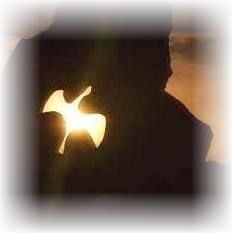Even though it’s been nearly 800 years since the massive fire at Montségur when over 200 Cathars were exterminated at the hands of the Catholic Church, legends surrounding the Cathar Treasure remain. Through the years treasure seekers and speculators have included the holy crusaders who put siege to Montségur’s fortress for nine months prior to the 1244 fire, the 1930’s amateur archaeologist, Otto Rahn (speculated to have provided the inspiration for Spielberg’s Indiana Jones), literary Illuminati, esoteric explorers and even historical fiction writers. Many have searched– all have wondered.
In prior posts concerning this medieval religious sect, I noted their propensity for eschewing trappings of the mundane world. This rejection was based on their belief that the physical world and their incarnation in it was not a creation of God but rather a creation of Satan. In adopting this belief, the dedicated Cathars, known as Parfaits (or perfecti), not only rejected the idea of procreation, they did not partake in the consumption of any food which was a result of procreation. As material acquisitions for their own needs were kept to a bare minimum, it begs the question, how did the legend of a Cathar Treasure arise?
Among the various authoritative resources on the Cathars, author Zoe Oldenburg, tells us that by the end of the twelfth century, the Cathar movement of the Languedoc had amassed a considerable fortune. To begin with, the majority of Parfaits were men of substance who turned over their property to the church. In addition, there were also credentes, ‘rank and file’ members, who left legacies of their entire fortunes to the church. While the Parfaits never broke their vow of poverty according to Oldenburg, they accepted all donations which were then used to provide support to the poor and those in need in the cities and surrounding countryside. They also maintained communes which incorporated schools, monasteries and hospitals.
While such amassing of property and goods certainly would be considered a ‘treasure,’ references to ‘The Cathar Treasure’ often imply it was something of far more importance including the Holy Grail… which of course has never been found. Speculative circumstances surrounding the Treasure’s disappearance vary. One version tells of three Parfaits and another man, possibly a mountain guide, escaping the flames on the early morning of March 16 by repelling down the side of Montségur’s pog with the Treasure.
Oldenburg surmises that the Cathar cache consisted of goods for trading as well as gold and silver coins. This certainly makes sense given the atmosphere of persecution and brutality of the times. However, perhaps even more precious to the Cathars was that for them, the Treasure consisted of their most sacred books and writings which were critical in helping maintain allegiance to their dogma and tradition. This possibility makes even more sense as literature in the early middle ages onward, was considered as precious as gold in many cases. Whatever the truth is, to this day the location and substance of the Cathars’ Treasure remains a mystery. However, legends and myths die hard and certainly this one has much life left in it.
SYMBOL OF THE CATHARS-DOVE IN FLIGHT
You can also follow me on:
https://www.facebook.com/gayemackauthor, https://www.twitter.com/gayemack, https://www.plus.google.com
https://www.linkedin.com, https://www.pinterest.com/gayemack5


Dear Gaye,
I gave just found you’r webpage relating to the Cathar Treasure.
I was highly interested as I have researched this thoroughly and written probably the most in depth book ever written on the subject. The book, The Heretics’ Revenge, is part historical novel ( Cathars, Montsegur, Rahn etc) and part fictional hunt and discovery of the treasure and relic.
I have been to Montsegur twice for research and spoken to people in Montsegur, including Aimee Couquet who met Rahn when he stayed there.
The book is yet unpublished despite approaching many many agents. The final discovery of the relic (close to Montsegur) is highly plausible but also deeply disturbing for the Catholic Church.
Regards
Martin Barrett
Arrowtown – New Zealand
As a follow-up to my comment in July 2019 my book “The Heretics’ Revenge” is available as both an ebook and a paperback. The most comprehensive coverage of the Cathars at Montsegur and the much later Rahn, followed by a highly plausible search and discovery of the Cathar cache that is one of the greatest finds ever. A discovery that will rock the Church and have a major impact on the Church of Rome.
I am happy to send you a paperback copy if you can give me an address to send to.